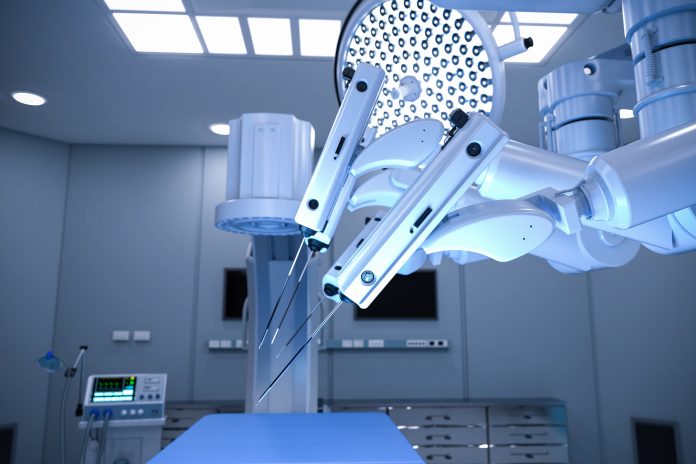In a landmark move, NICE has recommended 11 robotic surgery systems set to revolutionise care for NHS patients
Robotic surgery technology is capable of more precise movements than the human hand and could transform care for patients operated on by surgeons in specialist NHS centres.
The 11 systems will be implemented in the NHS whilst further evidence is collected over the next three years, demonstrating their cost-effectiveness for assisted robot surgery as part of the Early Value Assessment process.
Advancing soft tissue and orthopaedic care through robotic surgery
Robot surgery is already being used in the NHS for prostatectomy, which is a procedure to remove the prostate gland, either fully or partially.
NICE has conditionally approved five systems for soft tissue procedures, such as hernia repair or tumour removal, and six for orthopaedic surgery, such as full knee replacement.
The recommendations will allow a coordinated approach to expanding innovative surgical technologies available on the NHS. At the same time, evidence will be collected to help our committee validate these benefits, prove the value of the technologies, and inform future implementation decisions.
Some robotic surgery systems allow surgeons to perform procedures using mechanical arms controlled from a nearby console, while others are handheld. The surgical instruments attached to these arms move with greater dexterity than the human hand, offering greater precision.
Robot surgery has been shown to improve recovery times, reduce complications, and potentially increase access to these procedures.
“These innovative technologies can potentially transform soft tissue and orthopaedic surgical care in the NHS. The data gathered over the next three years will allow us to evaluate exactly how these technologies can improve patient care and help ensure NHS resources are directed toward interventions that deliver meaningful clinical benefits and long-term value to our health service,” commented Dr Anastasia Chalkidou, programme director of NICE’s HealthTech programme.
Dr Chalkidou continued: “Robot-assisted surgery may help overcome key limitations of conventional techniques through precise movements and enhanced 3D visualisation, potentially transforming surgical options and outcomes for NHS patients. Both applications could benefit patients who might not otherwise be candidates for minimally invasive approaches.”
Robot systems cost up to £1.5m
Robot systems can cost between £500,000 and £1.5 million and are typically only found in specialist centres that perform hundreds of procedures annually.
In 2011/12, only 20% of robotic procedures were for conditions other than urological cancer. By 2023/24, this had grown to 49%, with significant expansion in colorectal surgery, which now accounts for 25% of all robotic procedures.
Orthopaedic robot-assisted surgery has seen the fastest rise, growing from approximately 300 procedures in 2018/19 to more than 4,000 last year.
“This is fantastic news for patients and shows that the NHS continues to find new ways to utilise the latest technological innovations to improve care. This will be a vital element of the 10-Year Health Plan, which will be published in the coming months,” commented Professor Sir Stephen Powis, NHS national medical director.
Professor Powis continued: “Robot-assisted surgery is crucial to the future of high-quality healthcare – and with benefits including shorter stays in hospital, faster recovery for patients and less invasive procedures these advancements will have a knock-on effect throughout the system and help patients get treated quicker.
“This is an important step forward as we continue to work to ensure everyone is able to get high-quality care when they need it.”
“This is a further milestone in surgical innovation, and we are currently working hard to develop a national strategy that ensures patients across the country can access this treatment when they need it, regardless of location,“ added John McGrath, consultant urological surgeon at North Bristol NHS Trust, and chair of the NHSE Steering Committee for Robotic Assisted Surgery.
John continued: “Later this month, we will release the first national guidance for the NHS in England that describes how robotic programmes should be configured, implemented and delivered as the services scale up. A key aspect in this is ensuring the necessary increase in expertise in robot-assisted surgery across the NHS workforce, so this technology can have the greatest possible impact for patients.“
The independent committee have outlined several important considerations for implementing robotic surgery. These include ensuring equitable access across different regions, as current evidence shows lower uptake of minimally invasive surgery in more deprived areas of the country. Additionally, the availability of training, resources and staff to support these services will require careful planning.











